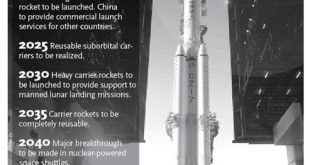Today, the lowest echelon members of the U.S. military deployed in remote overseas locations are unable to obtain on-demand satellite imagery in a timely and persistent manner for pre-mission planning. This is due to lack of satellite overflight opportunities, inability to receive direct satellite downlinks at the tactical level and information flow restrictions.
Satellite imagery at the moment is more of a strategic than a tactical asset. It can help commanders decide on their next move. But it can’t give individual soldiers an idea of what lies beyond the next thick line of trees. DARPA launched SeeMe program in 2012, with aim to give mobile individual US warfighters access to on-demand, space-based tactical information in remote and beyond- line-of-sight conditions. If successful, SeeMe will provide small squads and individual teams the ability to receive timely imagery of their specific overseas location directly from a small satellite with the press of a button — something that’s currently not possible from military or commercial satellites.
The program seeks to develop a constellation of small “disposable” satellites, at a fraction of the cost of airborne systems, enabling deployed warfighters overseas to hit ‘see me’ on existing handheld devices to receive a satellite image of their precise location within 90 minutes. DARPA plans SeeMe to be an adjunct to unmanned aerial vehicle (UAV) technology, which provides local and regional very-high resolution coverage but cannot cover extended areas without frequent refueling. SeeMe aims to support warfighters in multiple deployed overseas locations simultaneously with no logistics or maintenance costs beyond the warfighters’ handheld devices.
The SeeMe constellation may consist of some two-dozen satellites, each lasting 60-90 days in a very low-earth orbit before de-orbiting and completely burning up, leaving no space debris and causing no re-entry hazard. Randy Gricius, director of Raytheon’s space innovations group estimated that it would take only 24 of these small satellites to provide images of the ground anywhere within an area half the size of the United States within 90 minutes. NovaWurks seeks to develop a constellation of satlets, at a fraction of the cost of airborne systems, enabling deployed warfighters overseas to hit ‘see me’ on existing handheld devices to receive a satellite image of their precise location within 90 minutes.
The program may leverage DARPA’s Airborne Launch Assist Space Access (ALASA) program, which is developing an aircraft-based satellite launch platform for payloads on the order of 100 lbs. ALASA seeks to provide low-cost, rapid launch of small satellites into any required orbit, a capability not possible today from fixed ground launch sites.
Raytheon’s SeeMe Satellite Successfully Delivered to DARPA
Raytheon delivered the first Space Enabled Effects for Military Engagements (SeeMe), satellite to the U.S. Defense Advanced Research Projects Agency (DARPA) in Oct 2018. Assembled on the company’s missile production lines, the new SeeMe satellite aims to provide greater situational awareness to soldiers on the ground.
DARPA’s SeeMe program is designed to show that small satellites can be built affordably to give small squads timely tactical imagery directly from a small satellite. The satellites will come equipped with a color camera and a ten-inch telescope, Gricius said. “They’re literally off the shelf,” Gricius said about the processors. “You can go on a catalog and order them today” – though he added that these have yet to be proven space-worthy.
The satellites could use off-the-shelf materials to keep costs below $500,000 per unit: nitrous oxide propulsion systems borrowed from the auto racing world, valve technology from medical supplies, and processors similar to what are found on inexpensive personal computers. But the smaller satellites might not need to be as durable. Radiation tolerance is an important feature for high-budget satellites, but it’s not as critical in low orbit where the SeeMes will be flying.
A future constellation of small satellites could deliver high-resolution images of precise locations of interest to the soldier’s handheld device. Using its automated missile production lines, Raytheon can build large numbers of these small satellites quickly and affordably.
DARPA will integrate the Raytheon-built SeeMe satellite onto a Spaceflight Industries payload that will be launched into Low Earth Orbit (LEO) on a SpaceX rocket later this year. Military users will have an opportunity to evaluate the satellite’s performance during missions in early 2019. Eventually, a SeeMe constellation may comprise several types of small satellites, each lasting one to five years before de-orbiting and burning up, leaving no space debris and causing no re-entry hazard.
Small Satellite Sensors
Dense constellations of low-earth-orbit (LEO) micro-satellites can provide new intelligence, surveillance, and reconnaissance (ISR) capabilities, which are persistent, survivable and available on-demand for tactical warfighting applications. The Small Satellite Sensors program seeks to explore new sensor concepts that are well-matched to the capabilities achievable in small satellites. The program also seeks to develop and demonstrate enabling technologies and sub-systems needed for capable, but low-cost military satellites, such as secure and high-bandwidth RF and optical inter-satellite communications links.
References and Resources also include:
https://www.darpa.mil/program/space-enabled-effects-for-military-engagements
 International Defense Security & Technology Your trusted Source for News, Research and Analysis
International Defense Security & Technology Your trusted Source for News, Research and Analysis

